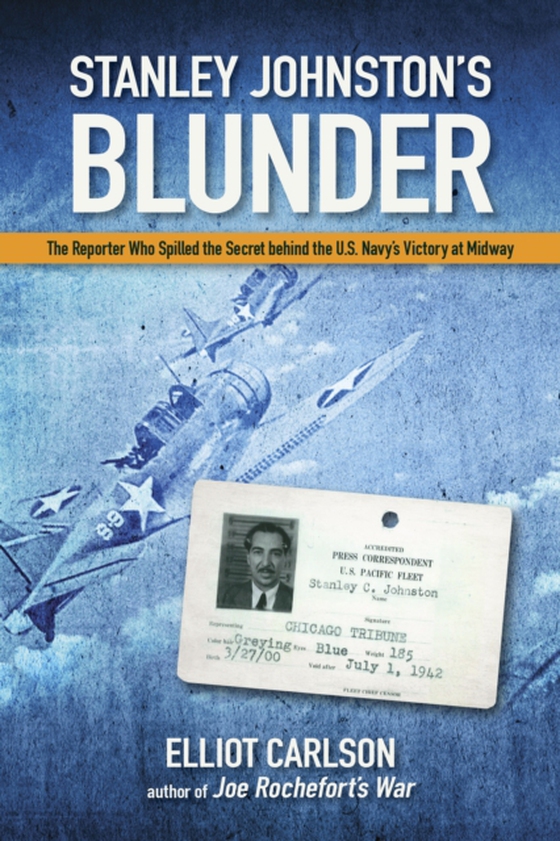
Stanley Johnston's Blunder e-bog
245,52 DKK
(inkl. moms 306,90 DKK)
In Stanley Johnston's Blunder: The Reporter Who Spilled the Secret Behind the U.S. Navy's Victory at Midway, Elliot Carlson tells the story of Stanley Johnston, a Chicago Tribune reporter who may have exposed a vitally important U.S. naval secret during World War II. In 1942 Johnston is embarked in the aircraft carrier USS Lexington during the Battle of the Coral Sea. In addition to recording ...
E-bog
245,52 DKK
Forlag
Naval Institute Press
Udgivet
15 oktober 2017
Længde
352 sider
Genrer
1FPJ
Sprog
English
Format
epub
Beskyttelse
LCP
ISBN
9781682472743
In Stanley Johnston's Blunder: The Reporter Who Spilled the Secret Behind the U.S. Navy's Victory at Midway, Elliot Carlson tells the story of Stanley Johnston, a Chicago Tribune reporter who may have exposed a vitally important U.S. naval secret during World War II. In 1942 Johnston is embarked in the aircraft carrier USS Lexington during the Battle of the Coral Sea. In addition to recording the crew's doomed effort to save the ship, Johnston displays great heroism, rescuing many endangered officers and men from the sea and earning the praise of the Lexington's senior officers. They even recommend him for a medal. Then his story darkens. On board the rescue ship Barnett, Johnston is assigned to a cabin where messages from the Pacific Fleet commander, Admiral Chester Nimitz, are routinely, and carelessly, circulated. One reveals the order of battle of Imperial Japanese Navy forces advancing on Midway Atoll. Containing information obtained by the Navy's codebreakers, this dispatch is stamped "e;Top Secret."e; Yet it is casually passed around to some of the Lexington's officers in the cabin while Johnston is present. Carlson captures the outrage among U.S. Navy brass when they read the 7 June 1942 Chicago Tribune front-page headline, "e;NAVY HAD WORD OF JAP PLAN TO STRIKE AT SEA."e; Admirals note that the information in the Tribune article parallels almost precisely the highly secret material in Nimitz's dispatch. They fear Japanese commanders will discover the article, grasp that their code has been cracked, and quickly change it, thereby depriving the U.S. Navy of a priceless military asset. When Navy officials confirm that Johnston wrote the story after residing in that Barnett stateroom, they think they understand the "e;leak."e; Drawing on seventy-five-year-old testimony never before released, Carlson takes readers inside the grand jury room where jurors convened by the Roosevelt administration consider charges that Johnston violated the Espionage Act. Jurors hear conflicting testimony from Navy officers while Johnston claims his story came from his own knowledge of the Japanese navy. Using FBI files, U.S. Navy records, archival materials from the Chicago Tribune, and Japanese sources, Carlson, at last, brings to light the full story of Stanley Johnston's trial.
 Dansk
Dansk

